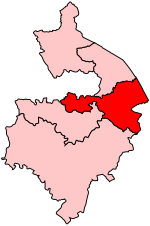Draycote Meadows
Meadows in WarwickshireSites of Special Scientific Interest in Warwickshire

Draycote Meadows SSSI (grid reference SP451708) is a 10 acres (4.0 ha) Site of Special Scientific Interest, notified in 1973. The site is 4 miles (6.4 km) southwest of Rugby immediately to the north of Draycote village. It is accessed from the B4453, close to the A45's London Road interchange. The site is managed by the Warwickshire Wildlife Trust and is well known for its flower rich hay meadows and variety of butterflies.
Excerpt from the Wikipedia article Draycote Meadows (License: CC BY-SA 3.0, Authors, Images).Draycote Meadows
Biggin Hall Lane,
Geographical coordinates (GPS) Address Nearby Places Show on map
Geographical coordinates (GPS)
| Latitude | Longitude |
|---|---|
| N 52.3339 ° | E -1.3388 ° |
Address
The Lias Line Cycleway
Biggin Hall Lane
CV23 9LF , Bourton And Draycote CP
England, United Kingdom
Open on Google Maps










